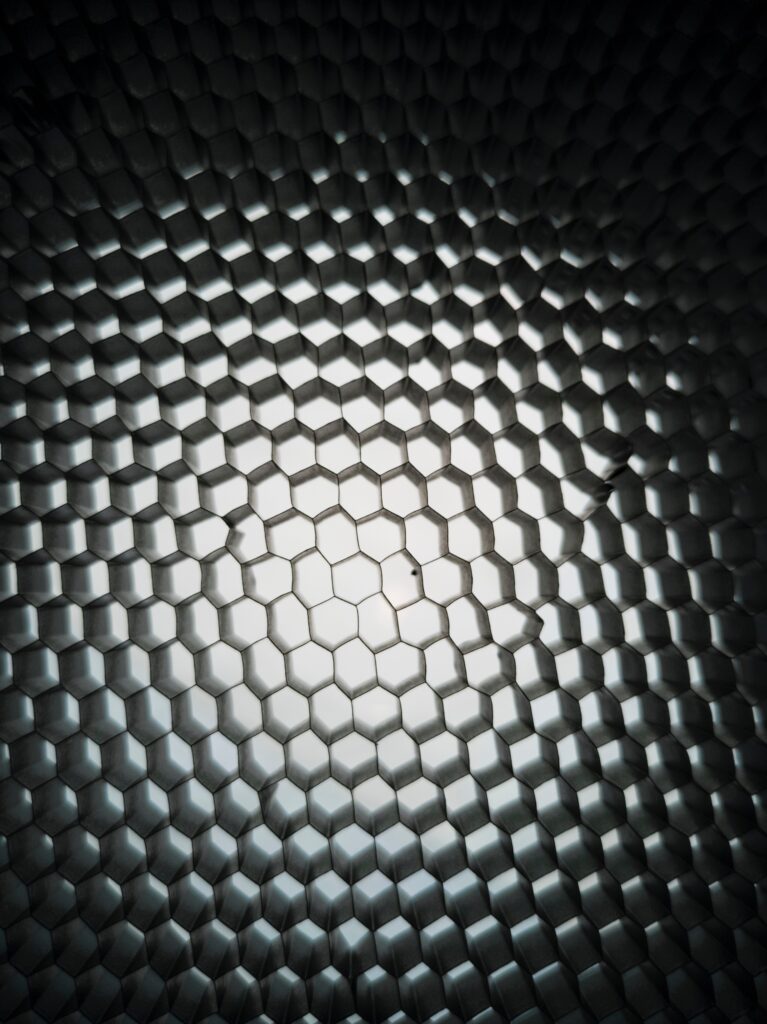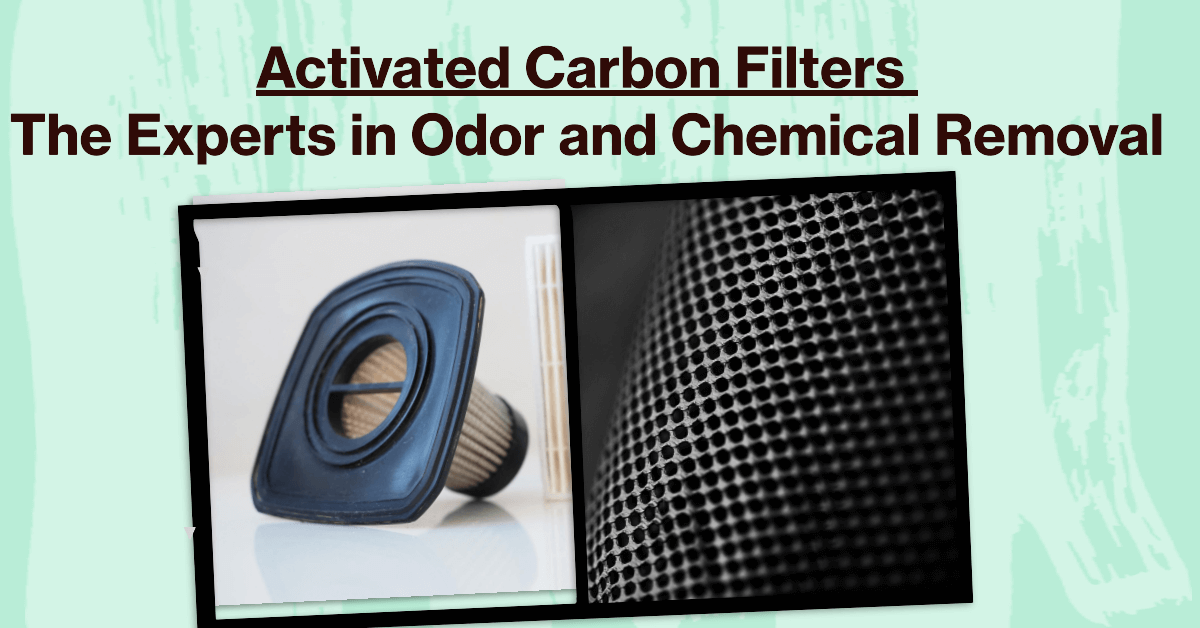Activated carbon filters, often referred as Charcoal filters, activated carbon odor filters, are used in both air and water purification. They possess an ability to neutralize a different unpleasant odors and harmful chemicals. In this article, we’ll understand the world of activated carbon filters, exploring their diverse applications and how they effectively improve the air we breathe and the water we consume.
Understanding the Activated Carbon
What Exactly is Activated Carbon?
Activated carbon is a unique material produced by heating carbon rich sources like wood, coconut shells or peat at high temperatures. This process creates a highly porous structure that acts like a magnet for molecules and particles, making it exceptional at trapping contaminants. This porous nature is essential for granular activated carbon filtration systems.

The Mechanics of Activated Carbon Filters
Activated carbon filters operate on a simple yet highly effective principle – adsorption. As air or water flows through these filters, the porous structure of activated carbon provides ample surface area for molecules to adhere to. This adsorption process allows activated carbon to capture and immobilize a broad range of substances, from bothersome odors to harmful chemicals. These filters are often used in air purifying activated charcoal systems.
Diverse Forms of Activated Carbon
Activated carbon comes in different forms, each for specific applications. These include activated charcoal air conditioner filters, activated carbon blocks and powdered activated carbon. This versatility makes it a powerful tool for addressing a wide range of filtration needs, including carbon air filters for houses.

Understanding Activated Carbon Filters
Activated carbon filters or charcoal filters, are an integral part of many air purifiers and filtration systems. They are highly effective in capturing and neutralizing a wide range of airborne contaminants, primarily odors and volatile organic compounds (VOCs). So, how do they achieve this feat?
Activated carbon is a specially treated form of carbon that is incredibly porous. This extensive porosity gives it an enormous surface area, allowing it to adsorb (not absorb) various gaseous pollutants, chemicals, and odors from the air.
The Science Behind Adsorption
Adsorption is a process where molecules adhere to the surface of a solid substance without being chemically absorbed into it. In the case of activated carbon, its porous structure provides countless binding sites for molecules in the air. When contaminated air passes through the filter, these pollutants stick to the carbon surface, effectively removing them from the air.
As a result of this adsorption process, activated carbon filters can trap and neutralize a diverse range of substances, including smoke, cooking odors, pet smells, and harmful chemicals like formaldehyde and benzene.

Benefits of Activated Carbon Filters
Banishing Odors with Activated Carbon
Activated carbon’s exceptional odor absorbing capabilities have made it a household favorite. Whether it’s in air purifiers, air conditioners or ventilation systems, these filters can effectively neutralize odorous molecules, leaving the air in your home smelling fresh and clean.
Removing Harmful Volatile Organic Compounds (VOCs)
Volatile Organic Compounds (VOCs) are chemicals found in household products and industrial emissions, contributing to indoor air pollution and health problems. Activated carbon filters are highly efficient at trapping and removing VOCs, making them crucial components of air purification systems and laboratories. They trap VOCs, preventing them from entering your lungs.
Allergy Relief
By reducing airborne pollutants, activated carbon filters can provide relief to allergy sufferers. Indoor allergens like pollen, dust mites and pet dander can be significantly reduced, making your living space a sanctuary for those with allergies.
Cleaner and Fresher Air
The combination of a HEPA filter and activated carbon filter in an air purifier can make a world of difference. While HEPA filters capture particulate matter, activated carbon steps in to eliminate odors and chemicals. The result? Cleaner, fresher air for you and your family.
Industrial and Environmental Applications
Activated carbon filters aren’t limited to homes; they also find extensive use in industries. These filters help control emissions, remove contaminants from industrial processes and even contribute to environmental cleanup efforts, such as addressing oil spills. Their versatility and efficiency in capturing various chemicals make them indispensable tools for safeguarding the environment.
Nurturing Gardens and Crops
Activated carbon filters play important role in indoor gardening and agriculture. They help eliminate odors from growing areas and can assist in removing chemicals from irrigation water, creating a healthier environment for plants to thrive.
More Applications of Activated Carbon Filters
Indoor Air Quality Enhancement
Activated carbon filters have a significant impact on improving indoor air quality. Beyond eliminating odors, they can effectively capture particulate matter, dust and allergens, making them essential components of air purifiers. This is especially beneficial for individuals with allergies or respiratory issues, as these filters help create a healthier living space.
Health and Well-being
Activated carbon isn’t limited to air and water filtration; it has found its way into healthcare as well. Activated carbon is used in medical applications to treat poisoning or overdoses. Its adsorption properties help bind and remove toxins from the body, providing a lifeline in critical situations.
DIY Charcoal Air Purifiers
Activated carbon filters can be used in DIY air purifiers. By placing activated carbon in a container with good airflow, you can create a budget-friendly air purification system. While not as powerful as commercial air purifiers, they can still make a noticeable difference in indoor air quality.
The Activated Carbon Bed: Where the Magic Happens
Activated carbon filters are often comprised of a bed of activated carbon granules. The effectiveness of the filter depends on the quality and depth of this carbon bed. Deeper beds allow for longer contact time between air or water and the activated carbon, resulting in better filtration. This is especially crucial for applications such as carbon filters for growing in indoor agriculture.
Sustainability and Reusability
One of the appealing aspects of activated carbon filters is their sustainability. While they eventually become saturated with contaminants, many can be regenerated or reactivated. The process involves heating the carbon to high temperatures, which burns off the trapped contaminants and restores the carbon’s adsorption capacity. This sustainable feature makes activated carbon filters an eco-friendly choice, reducing the need for frequent replacements and minimizing waste.
Natural Alternatives to Activated Carbon Filters
For those who prefer a more eco-friendly approach, there are natural air purifiers that use plants to cleanse the air. Discover these green alternatives in our article Natural Air Purifiers.
We hope you now have a comprehensive understanding of the incredible world of activated carbon filters. Whether it’s improving indoor air quality, purifying water, or contributing to a more sustainable lifestyle, these filters play a pivotal role in creating cleaner and healthier environments for us all.
For more information and guidance on air purifiers, explore our Air Purifier Selection Guide and check out our blog on Air Purifier Myths.
Frequently Asked Questions (FAQs)
Are activated carbon filters safe for homes with pets?
Yes, activated carbon filters are safe for homes with pets. They can effectively eliminate pet odors and allergens from the air, creating a more pleasant and healthy indoor environment.
How often should I replace activated carbon filters in my air purifier?
The frequency of replacement varies depending on usage and the specific air purifier model. Typically, it’s recommended to replace the filter every 3 to 6 months for optimal performance. Refer to the manufacturer’s instructions for guidance.
Can activated carbon filters remove viruses and bacteria from the air?
Activated carbon filters primarily target odors and chemicals. To remove viruses and bacteria from the air, consider using an air purifier with a HEPA filter or a UV-C light sterilization system in addition to activated carbon filtration.
Can I reuse activated carbon after it’s saturated with contaminants?
Yes, activated carbon can often be regenerated or reactivated by heating it to high temperatures to burn off the trapped contaminants. However, this process may not be effective in all cases, so it’s essential to follow manufacturer guidelines and consider replacement if necessary.
Do activated carbon filters release any harmful byproducts into the environment?
Activated carbon filters do not release harmful byproducts when used as intended. They are a safe and environmentally friendly method for odor and chemical removal.
What is an activated carbon filter?
An activated carbon filter is a type of air purification filter made from specially treated carbon. It’s designed to capture and neutralize various gases, odors and chemicals in the air, making it cleaner and safer to breathe.
What are activated carbon filters good for?
Activated carbon filters are excellent at removing odors, smoke, and harmful chemicals like formaldehyde and benzene from the air. They help improve indoor air quality and create a fresher environment.
What are activated carbon filters used to remove?
Activated carbon filters are used to remove a wide range of pollutants, including cooking smells, pet odors, volatile organic compounds (VOCs) from cleaning products and even certain harmful gases like radon.
What are the different types of activated carbon filters?
There are different types of activated carbon filters, including granular activated carbon (GAC), powdered activated carbon (PAC) and carbon block filters. Each has its unique application and characteristics.
How does activated carbon work?
Activated carbon works through a process called adsorption, where pollutants stick to its porous surface. This traps the contaminants, preventing them from staying in the air you breathe.
What is in activated carbon?
Activated carbon is primarily made from natural materials like coconut shells, wood or coal. It undergoes a special activation process to create the porous structure needed for filtration.
What is an example of a carbon filter?
An example of a carbon filter in an air purifier is a specialized activated carbon filter designed to eliminate odors and remove harmful gases from the air. This filter typically consists of a bed of activated carbon granules or pellets enclosed within the air purifier. When air passes through the filter, it comes into contact with the activated carbon, which adsorbs and neutralizes odors, smoke, volatile organic compounds (VOCs) and other unwanted airborne pollutants, resulting in cleaner and fresher indoor air.
An example of a carbon filter is the filter used in a water pitcher or a countertop water filtration system. These filters use activated carbon to remove impurities from drinking water.
How is activated carbon made?
Activated carbon is made by heating carbon-rich materials at high temperatures without oxygen. This process creates tiny pores on the carbon’s surface, increasing its ability to trap pollutants.
What are the 4 main filter types?
The four main filter types are mechanical filters, activated carbon filters, HEPA filters and UV filters. Each type serves a specific purpose in air purification.
1. Mechanical Filters:
These filters are like sieves that catch big things like dust and pet hair.
Think of them as the first barrier to keep the air clean.
2. Activated Carbon Filters:
These are odor-eaters.
They’re great at getting rid of bad smells and harmful gases.
3. HEPA Filters:
HEPA filters are like the superheroes of filters.
They catch tiny things like pollen, mold, and even some germs.
4. UV Filters:
UV filters use special light to zap and kill tiny invisible germs.
They’re like invisible shields against bacteria and viruses in the air.
What is the difference between HEPA and activated carbon?
HEPA filters primarily capture particles like dust and pollen, while activated carbon filters focus on removing gases and odors. Combining both types in an air purifier provides comprehensive filtration.
What are the three types of filter systems?
The three types of filter systems are pre-filters, main filters (such as HEPA filters), and post-filters. These work together in many air purifiers to thoroughly clean the air.
Pre-Filters: These catch big stuff like dust and hair.
Main Filters (e.g., HEPA Filters): They grab tiny particles like pollen and germs.
Post-Filters: These tackle remaining odors and gases to make the air smell better
Which activated carbon is best?
The best type of activated carbon depends on the specific application. For air purification, coconut shell-based activated carbon is often considered effective and environmentally friendly.
What is the best type of activated carbon?
The best type of activated carbon varies depending on the intended use. Some common types include activated carbon made from coconut shells, wood or bituminous coal. The choice depends on the specific filtration needs.
Which is better, carbon or HEPA filter?
Neither is inherently better; they serve different purposes. Carbon filters excel at removing gases and odors, while HEPA filters are designed for capturing tiny particles. Using both in combination provides comprehensive air purification.
DheerajSonwane is a dedicated writer with expertise in air purification technologies. He focuses on providing well-researched content to help readers improve indoor air quality in homes and businesses. As the lead writer at AirPurifierMaster.com, Dheeraj offers practical advice his insightful reviews guide individuals in choosing the best air purifiers for their needs.


12 thoughts on “Activated Carbon Filters: The Experts in Odor and Chemical Removal”